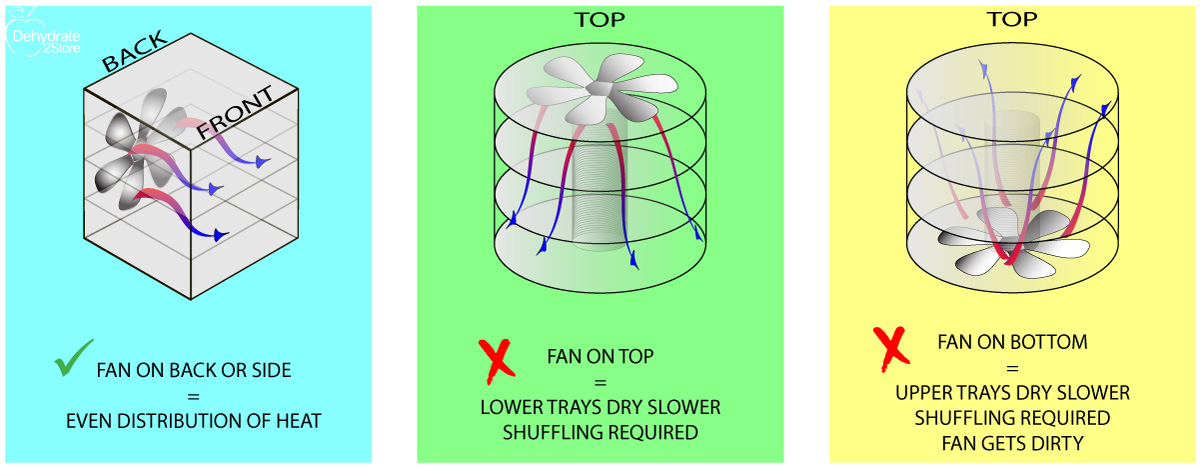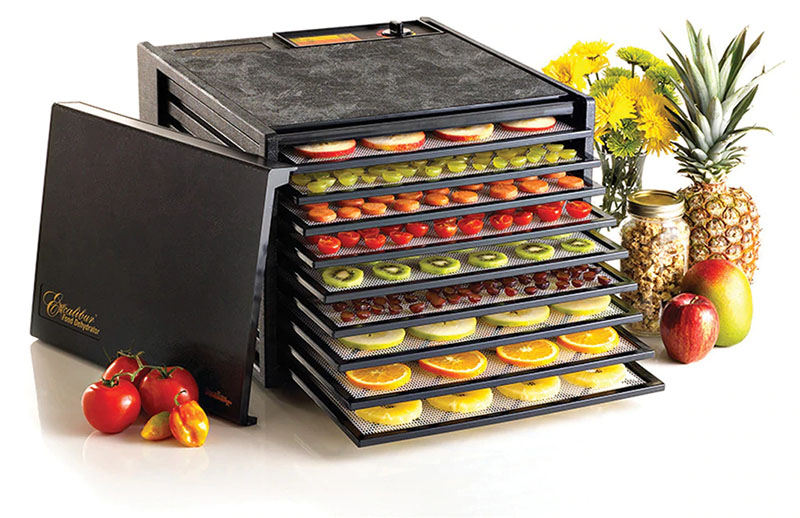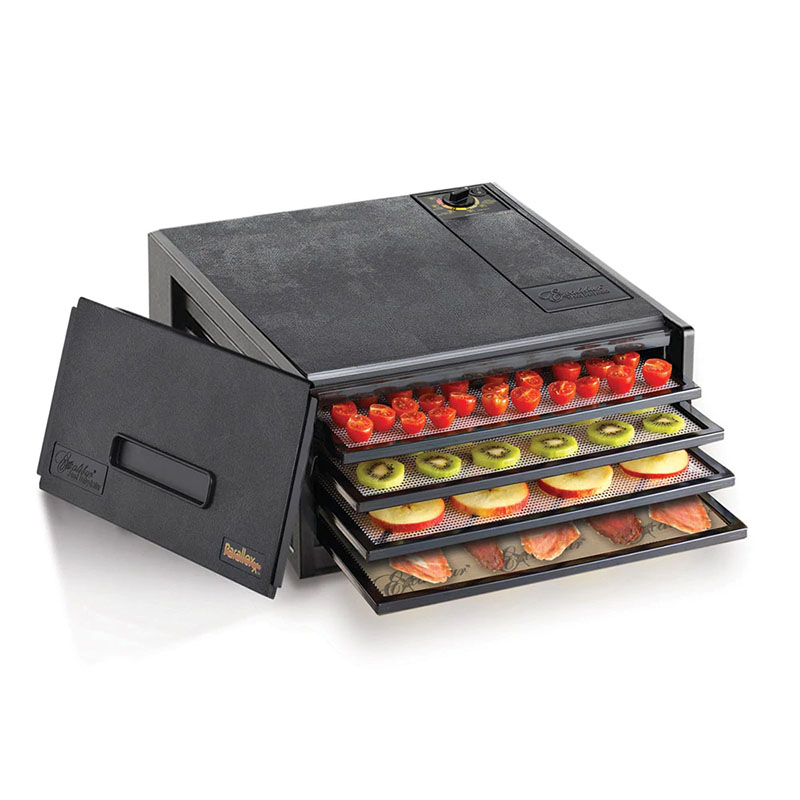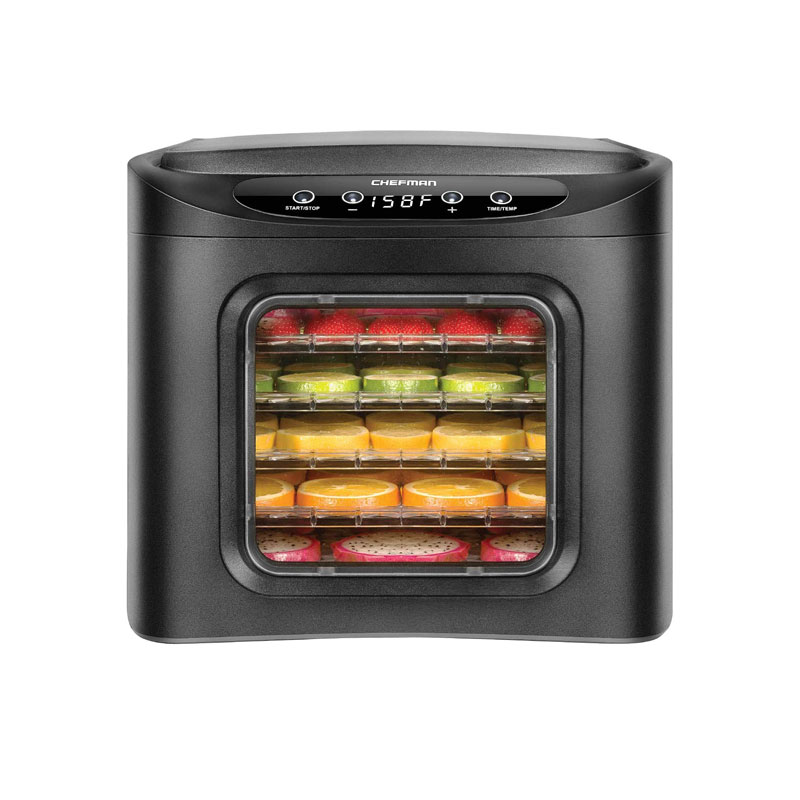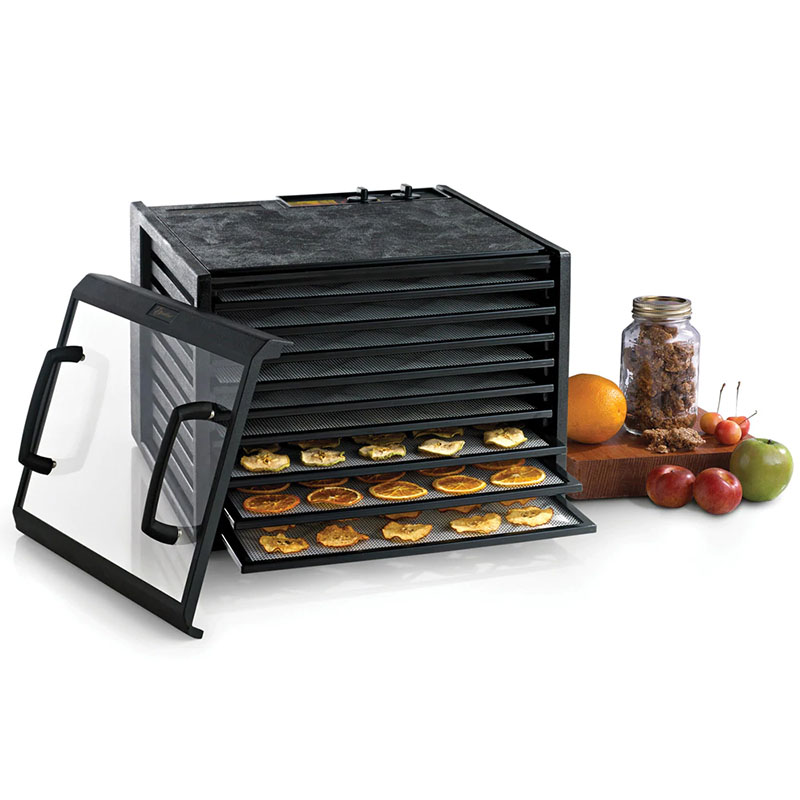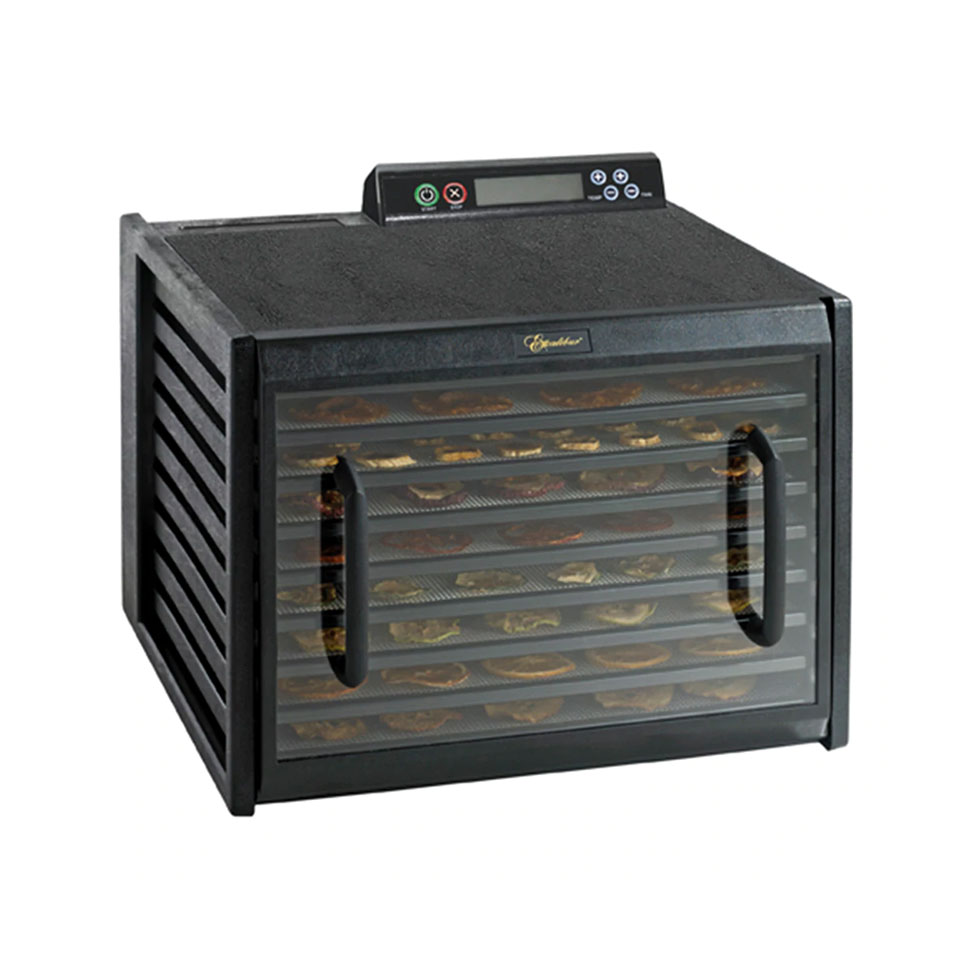What is the Best Dehydrator to Buy?
We get a lot of questions from our viewers, and this is one of the most frequent questions we get! There are a lot of options out there for dehydrators, and it can be overwhelming to choose. No need to worry though, we will walk you through it!
Read this page to learn the basics of choosing a dehydrator and which type of dehydrator is best for you, then go to our Dehydrator Reviews page to get the nitty-gritty details on some specific models and brands.
What is a Food Dehydrator?
A food dehydrator is a round, rectangular, or box-shaped device that is about the size of a microwave oven. It consists of a heating unit, multiple drying trays, and a fan to circulate air. Dehydrators dry food by heating it at low heat for a long period of time in an environment with good airflow. This process safely removes 95% or more of the moisture from food.
Standard household ovens, stovetops, or microwaves can not obtain these conditions, so a dehydrator is needed!
The Ideal Design
Food dehydrators come in all shapes and sizes, so choosing the right one for you can seem like a daunting task! Don’t fear! We at Dehydrate2Store have been dehydrating foods for almost two decades and have extensively used countless dehydrators!
The most important design feature of a dehydrator is without a doubt the placement of the heating unit and fan. The heating unit and fan can be mounted either on the bottom, the top, or the back or side. The location of this is paramount to appropriate drying.
When a dehydrator has a fan on the top or bottom, airflow must go through the layers of food, and thus food can dry unevenly, with the items closest to the fan/heating unit drying first. While you can use a dehydrator with this design, to prevent uneven drying you will often have to rotate your trays.
The ideal dehydrator design is with the heating unit and fan on the back or side. This design allows for the best airflow, as the air will flow evenly horizontally over the food.
Though this is not always the case, usually dehydrators with the heating unit and fan on the back or side are square, while ones with the fan on the top or bottom are often circular, and sometimes “stackable.”
Dehydrator Cost/Pricing
Dehydrators with back-mounted or side-mounted fans are unfortunately often slightly more expensive than those with fans on the bottom. We would strongly consider spending that additional amount, as you will easily make up this cost with the time and money you save with proper food dehydration!
You will quickly see that it will pay off later to have the right dehydrator in the beginning.
Dehydrator cost also depends on the size, often measured in tray number. Tray number ranges on average from 4 to 10 trays for standard home dehydrators.
A 4-tray dehydrator should only be considered if you will be dehydrating in small quantities and not often. A 6 to 9 tray dehydrator is typically best, especially for families.
A back-mounted 6 to 9 tray dehydrator will range from 100 to 300 dollars.
A top or bottom fan-mounted dehydrator with this many trays will be less expensive, ranging from 50 to 150 dollars on average.
What Size to get?
Best Dehydrator Brand
For back-mounted and side-mounted dehydrators:
We have been dehydrating for almost two decades, and have tried numerous brands and styles of dehydrators.
The tried-and-true brand is Excalibur Dehydrators. From our standpoint, these are the gold standard for food dehydrators.
These machines will likely last you forever without ever breaking down, and will give you a perfect even dry on your foods every time. Fun Fact: all of the food shown in our cookbooks was made with Excalibur dehydrators!
The downside to Excalibur dehydrators is that they are slightly more expensive than many of the competitors.
A nice alternative is Chefman Dehydrators. Chefman is a well-known kitchen brand, but they are relatively new in the dehydrator game. Their dehydrators are a bit more budget-friendly than Excalibur, and actually even slightly quieter. The downside is that the trays are a few square inches smaller, and the heating unit may be slightly less powerful. Importantly too is that they only have a 6-tray option, and do not currently have the larger 9-tray option.
Top-mounted and bottom-mounted dehydrators
As mentioned, if your budget requires a dehydrator in the $50 to $100 range, you will be left with limited options, including used or refurbished dehydrators or top or bottom-mounted designs. It is OK to use a budget dehydrator, but remember that you may have to rotate the trays, and this will be tedious for the serious food dehydration hobbyist. However, for beginners, these are still great options to get you started.
The most recognized dehydrator brand to the lay public is FoodSaver, especially since they also make vacuum sealers and are often found in local stores like Target and Walmart. Given their long history, they have worked out many kinks in their design and provide a good budget dehydrator. More noteworthy brands include Presto, which is well-rated for its durability and quality, and MasterChef, which is well-rated for its compact design, easiness of cleaning, and customer service.
Go to our Dehydrator Reviews page to get more details on specific Excalibur and Chefman models.
Optional Features
Temperature Adjustment
Your dehydrator will absolutely need a knob or button to adjust the temperature. This should range from about 90 to 140 degrees Fahrenheit. Do not purchase a dehydrator that lacks a way to adjust the temperature.
Mesh Linings
Some dehydrators have plastic trays with a removable mesh liner, like Excalibur Models, and some have trays that are a single plastic piece. We personally enjoy the trays with the mesh liners as it makes cleaning easy, and you can remove them and use them as a funnel to transfer dehydrated foods to bags or jars.
Timer
Since it is not possible to overdry your dehydrated goods, we do not feel a timer is necessary. In fact, it can be harmful. For example, if your auto-shutoff timer stops while you are at work, and your food isn’t fully dehydrated, you risk leaving moist food out in the open to collect bacteria or other contaminants. Even if your food is fully dehydrated, once the dehydrator shuts off, you should not leave your food out in the open to re-collect the moisture in the air. Dehydrated foods should be stored properly or eaten after removal from the dehydrator.
That being said, you should not pay more for a dehydrator simply because it has a timer. If it does have a timer, that is fine, but make sure you are able to deactivate or choose not to use the timer.
BlueTooth
Some newer dehydrator models are beginning to incorporate Bluetooth. it remains to be seen the utility of this addition, but the idea is that you would be able to set the temperature and a timer (again, we do not recommend setting an auto-shut-off timer) using your mobile phone.
See our Dehydrator Reviews!
We will go deep in detail on some available brands and models on our “Dehydrator Reviews” page, so stop there next!

